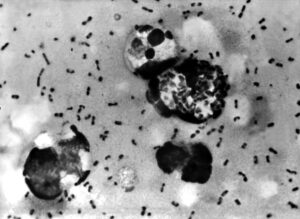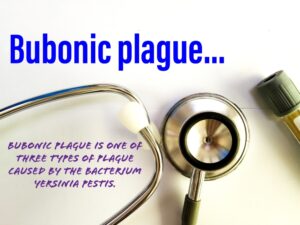What's On This Page?
ToggleLet’s talk about Bubonic Plague from a medical standpoint, not political. I’m not going to entertain any of that because for me, it’s just a disease, not a political talking point. Here’s a VIDEO Morning News from NBC regarding garbage heap, rats and trash downtown on Ceres Avenue, near a shopping district! Orkin -the famous pest control company- has statistics and ranks L.A. the second most rat-infested city. Rats are a vector for Bubonic Plague.
The plague making a new deadly appearance, after being extinct for a long time in the US. Centuries ago, it killed 60% of the population in other parts of the world, so this is nothing to dismiss. If it spreads in the US, it will be deadly for millions of people. Controlling its spread is imperative to our safety and survival.
Bubonic plague was the second biggest killer on the planet, second only to smallpox. Symptoms vary from person to person however, the first sign is a fever with nausea and vomiting. After that, or along with it, swollen lymph nodes occur in the armpits, groin or neck. Skin sores are hallmark, and turn black that’s why it is also known as “Black Death.”
So many people died so quickly of this, by the millions, that they were buried in mass graves. There was no escaping it. Today, we know that proper sanitation, early detection and certain antibiotics can help. They’re not a fail safe, they may not work and the fact is that Bubonic disease is often fatal, especially the septicemic and pneumonic type. See below.
Bubonic plague is on the rise in the United States because of the perfect storm of problems. It’s caused by a bacteria called Yersinia pestis. It is named after one of the two physicians who discovered it in 1894, Alexandra Yersin. The other co-discoverer was from Hong Kong, Dr.Kitasato Shibasaburō.

How the plague is spread is debatable. The reason I say that is because in 2014, scientists examined the skeletal remains of 25 people from medieval times who died in from the plague. They all had signs of vitamin D deficiency. Interestingly, DNA evidence suggests that it was killing people via an airborne infection spread by coughing and sneezing, not fleas from rats which is what most doctors and researchers say.
I think they’re right because the virality of the disease was so swift and so deadly, there couldn’t have been enough fleas to do that kind of damage, and produce a widespread mass killing on Earth! So I agree that this endemic plague that attacked this geographic area had to be airborne.
Sure enough, they traced the deaths to a “pneumonic” plague which does attack the airways. If this interests you, CLICK HERE to read more.
Despite this, most experts say that Bubonic Plague is only spread by fleas, which carry the pathogen after they bite infected animals such as rats, mice, rabbits or squirrels, also prairie dogs, bobcats, coyotes and others. So after the flea bites an animal that has it, the flea then has this germ in its system, and then it gets passed to your cat or dog. If your pet comes into contact with the flea it becomes infected.
If your pet bites you, scratches you, licks you or sneezes (droplets) near you, then you could get infected (if they are infected). For that matter, the infected fleas get carried into your home. This is similar to how Lyme disease gets into humans. Veterinarians play an important role in protecting pet owners from diseases and alerting the public health department when they treat animals with these types of infections.
But nothing can prepare them for an epidemic of bubonic plague. According to National Geographic, this disease is “the much feared disease spread quickly for centuries, killing millions. The bacterial infection is very much alive.”
Where is it being seen in the US?
Right now, the most predominant location for Bubonic Plague is in California, but also Southern Colorado, Arizona and New Mexico. There have been cases elsewhere too.
In California, especially San Francisco and Los Angeles, there is a humanitarian crisis, meaning there is a lot more homelessness in these areas. This naturally leads to fecal matter being scattered upon some of the streets. The filth is at a crisis level in some areas that were once pristine and filled with tourists. I’ve been to California several times for trade shows, book signings, lectures and other projects.
It’s a beautiful state for the most part, but there are now areas in San Francisco and L.A. that are reporting illegal trash dumping, and homeless camps and more. There are many reports about this including this one by KTLA Channel 5. As I mentioned a few minutes ago, L.A. is the second most rat-infested city now, in the United States.
In combination with rotting food, needles and other trash, rats have made it their home because they thrive in the infestation.
The rats carry the fleas with the plague, which then potentially infect pets, other animals and people living in the streets. The pets carry the fleas with disease into their owner’s homes.
So minimizing the trash and the rats would help in reducing the rate of infection. But oddly, California is proposing a new ban on rat poison. So if that goes through, the rat population could rise, unless they have some other method of controlling the rodents. With a rising rat population, Bubonic plague-infected people will be on the rise even moreso than it is. Sacramento was recently forced to close an outdoor playground because of the rats as they were naturally worried about children getting ill.
Comorbid Conditions
Even the world-famous internet Dr. Drew Pinsky has warned of the Bubonic problem by saying in an interview recently, “It is an absolute complete breakdown where the people living on the streets are defecating and urinating and every excrement, every byproduct of what they’re eating and food and everything else is just piling in the streets.”
Aside from the plague, we are also seeing a rise in hepatitis A, tuberculosis (TB) and generalized skin and soft tissue staph infections spreading in San Francisco and surrounding cities due to the same problem of human waste and trash in certain sections of the city.
In Colorado where I live, we are seeing a rise too. Plague-infected prairie dogs have caused some wildlife refuge shutdowns near Denver. The fleas that carry the plague are spreading it to pets and from there to humans. This was discovered in late July 2019. According to my sources, “Wildlife and nature areas near Denver have also been shut down as officials continue efforts to stem the spread of the disease.”
In Idaho, a boy was treated for the plague in 2018. HERE is that story.
Modern History
In modern history, we have only seen this infection in the following regions worldwide and it has NOT been in epidemic fashion. That may change soon: Democratic Republic of the Congo
Africa MadascarChina
India
Vietnam
Mongolia

More on the Disease
Yersinia pestis is a gram-negative, non-motile pathogen, it is not a fungus. It’s a bacteria, it is anaerobic so it thrives in parts of the body that are dark, deep and without oxygen (think brain, heart and kidneys). It can take three primary forms which infect the lungs (termed pneumonic) or the bloodstream (septicemic) or true bubonic plagues.
Over 80 percent of cases of the plague are the bubonic form. It is classified as a Category A infection according to the National Institute of Allergy and Infectious Disease which means that it can be easily transmitted from person to person and result in a lot of death and disability, and “might cause public panic and social disruption.” Remember, there is evidence to suggest that airborne transmission of the plague likely.
I pulled the following symptom data off the CDC website.
Bubonic plague.
Patients develop sudden onset of fever, headache, chills, and weakness and one or more swollen, tender and painful lymph nodes (called buboes). This form is usually the result of an infected flea bite. The bacteria multiply in the lymph node closest to where the bacteria entered the human body. If the patient is not treated with appropriate antibiotics, the bacteria can spread to other parts of the body.
Septicemic plague.
Patients develop fever, chills, extreme weakness, abdominal pain, shock, and possibly bleeding into the skin and other organs. Skin and other tissues may turn black and die, especially on fingers, toes, and the nose. Septicemic plague can occur as the first symptoms of plague, or may develop from untreated bubonic plague. This form results from bites of infected fleas or from handling an infected animal.
Pneumonic plague.
Patients develop fever, headache, weakness, and a rapidly developing pneumonia with shortness of breath, chest pain, cough, and sometimes bloody or watery mucous. Pneumonic plague may develop from inhaling infectious droplets or from untreated bubonic or septicemic plague that spreads to the lungs. The pneumonia may cause respiratory failure and shock. Pneumonic plague is the most serious form of the disease and is the only form of plague that can be spread from person to person (by infectious droplets).
Bubonic Plague Spreads Quickly
Rats and mice are the primary vector. People usually get plague after being bitten by a flea that jumped off an infected rodent. The flea has to be carrying the germ in order to give its host the disease. Most fleas do not carry the plague. This can occur when people or animals enter areas where rodents have recently died from the plague, or when pets like dogs or cats carry infected fleas into the house.
Flea colors can help protect your pets. Bubonic plague can infect animals like cows for example, it can also infect humans and again, was one of the biggest killers in history, reducing the global population by about 100 million people, very quickly. In the 14th century, the world population went from 450 million to 350 to 375 million people.
The deceased were often buried in mass graves because there was simply not enough time to take care of the bodies properly. Could that happen again? I don’t think so but the disease is certainly on the rise and if we don’t do something, it could cause another epidemic. It’s scary to think about it. What we do know is that if caught early and treated properly, mortality rates are low.
Solutions
Catching it is key. Even better is prevention!
Once inside the body, the germ ‘explodes’ and essentially injects poison into special immune cells that are defensive in nature (macrophages) and render them useless. Once knocked out, macrophages can no longer detect the germ. The bacteria then grows wildly and quickly, and kills the host, unless detected and treated very quickly.
There are different types of plague and so infections can occur through various routes, even though people assume it’s only through contact with rats. It’s not just rats, but rats get a bad rap for spreading it. It could also be, ticks and fleas, and human-to-human contact, as well as through the air.
What can you do?
* Reduce risk by treating your pets for fleas, and not letting them mix with rodents or wildlife.
* Wearing insect repellent in plague-infested cities is a good idea.
* Control rodents with rodenticides or traps.
* If you find a dead rat or mouse, be careful handling it, wear gloves and/or mask. You don’t want to make contact with your skin, or inhale pathogens from a dead animal.
* If you are out hiking or working outdoors in areas known to be infested, it’s a good idea to use repellent and keep your pets away from feces and remains of dead animals.
* Avoid travel to areas where it’s dangerous.
* Don’t let your dogs or cats roam free in endemic areas.
* Keep pets out of the bed.
* Let’s help the homeless the best way we can
See a physician immediately if you develop symptoms known to be associated with the plague. The first sign is usually fever and nausea/vomiting. After that, or along with it, there is pain in the groin, armpits or neck due to swollen lymph nodes in the region. Sores upon the skin may erupt and turn black. This is why the pandemic was called “Black Death.”
If you are immunocompromised, or even if you are not, I think it’s best to avoid vacationing in areas that are hot spots for infestation.
That has to do with individual nuances such as gene SNPs and kidney and liver function, and also the type of infection one has. Some antibiotics offer different routes of administration (ie inhalation versus oral versus intramuscularly). But that aside, I can tell you that doxycycline, and gentamicin may be useful. Here is a STUDY showing a relatively good safety profile and efficacy with these two medications.
Streptomycin is an older drug and may also be useful. In fact, in 2014, an ARTICLE published in a German medical journal stated, “For treatment of plague, streptomycin is still considered the drug of choice.”
Treatment
There is so much silliness on the Internet, I’d suggest you not google “natural remedies for bubonic plague” because you will lose your mind. Don’t do it!
I can tell you that rubbing your body with a chicken will NOT cure you! Neither will leeches.
Neither will application of excrement and tree flowers to your lymph nodes.
Did I just stop you from googling that stupidity? Or did you do it?!
Anyway, it’s impossible to surmise which antibiotic is the very best one for treatment of this condition, but we have several good options.
That has to do with individual nuances such as gene SNPs and kidney and liver function, and also the type of infection one has. Some antibiotics offer different routes of administration (ie inhalation versus oral versus intramuscularly).
But that aside, I can tell you that doxycycline, and gentamicin may be useful. Here is a STUDY showing a relatively good safety profile and efficacy with these two medications.
Streptomycin is an older drug and may also be useful. In fact, in 2014, an ARTICLE published in a German medical journal stated, “For treatment of plague, streptomycin is still considered the drug of choice.”
While it likely will never happen to you, the sad reality is this is a very serious condition. It is still mainly spread by infected fleas from rats and other small creatures. But it may also occur if you get exposed to bodily fluids from a dead critter, or an airborne pneumonic strain. Treatment is imperative. Globally speaking, there there are about 700 to 800 documented cases each year, but that number is on the rise, especially because of the reasons explained above.

Suzy Cohen, has been a licensed pharmacist for over 30 years and believes the best approach to chronic illness is a combination of natural medicine and conventional. She founded her own dietary supplement company specializing in custom-formulas, some of which have patents. With a special focus on functional medicine, thyroid health and drug nutrient depletion, Suzy is the author of several related books including Thyroid Healthy, Drug Muggers, Diabetes Without Drugs, and a nationally syndicated column.


